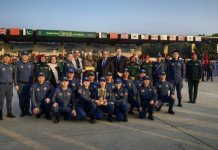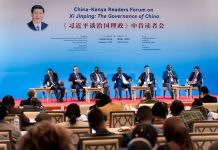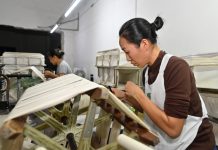BEIJING: China’s top COVID epidemic control group on Friday rolled out guidelines on instructing rural areas with relatively limited medical resources on how to cope with potential outbreaks of the COVID-19 infections during the upcoming New Year and Spring Festival holidays, as rural areas are anticipated to come under great pressure during this time of the year when China embraces chunyun, the world’s largest human migration, while the country continues to optimize its COVID-19 response measures and relax requirements for cross-region travel.
The rollout of guidelines is to ensure migrant workers from and permanent residents in rural areas have ready access to timely and sufficient medical services, according to the Joint Prevention and Control Mechanism of the State Council on Friday.
The guidelines demanded that migrant workers who are scheduled to go back to their villages wear masks properly and try to reduce contacts with the seniors, especially those with underlying diseases. The village committees and medical institutes should collect information of returnees and offer them timely medical services if they develop COVID-19-like symptoms.
The health status of vulnerable groups including the elderly, pregnant women and children should be monitored. Medical staff in villages can provide necessary consultations, health monitoring services and home visits, if necessary, the guidelines note.
The guidelines came as China prepares for chunyun, or Spring Festival travel rush. The 2023 chunyun is expected to reach 90 percent of the pre-epidemic level in 2019: About 360 million passenger trips will be made and the average daily number of trips will reach about 9 million, China Railway said on Friday during a press conference outlining its preparation work for chunyun.
Data from Qunar released on Thursday also showed that air ticket bookings in the week following December 7 climbed by 8.5 times compared to the previous week.
China on December 7 announced 10 new measures to further optimize epidemic prevention work, including the scrapping of checks on nucleic acid test results and health codes for domestic cross-regional travel.
The recent release of the 10 new COVID-19 response measures buoyed homesick individuals looking ahead to the Spring Festival holidays. This year, Chinese people will probably be able to go back to their hometowns to reunite with their family members, Zhang Boli, an academician from the Chinese Academy of Engineering, recently told Chinese media.
After the 10 new measures ended mass nucleic acid testing and allowed people with no or mild symptoms to home quarantine, cases began to climb in some Chinese metropolises such as Beijing, Shanghai and Guangzhou. This led to concerns that when migrant workers leave cities and flood rural areas, Chinese villages will face a huge risk of large-scale outbreaks as the medical resources in these places aren’t as sufficient as in the cities.
Zhang had warned of the risk of COVID-19 transmission during the Spring Festival travel rush. But at the life and health sub-forum of the 2023 Global Times Annual Conference held on Friday, he sought to ease public concerns.
“Although the number of COVID-19 infections will go up in the short term, the overall situation is developing in a good direction, as the epidemic is expected to return to normal by the time the spring flowers bloom following peaks in January and February next year,” he said. There will be no large-scale infections, and people’s work, life and study will gradually be resumed and unaffected, according to Zhang.
Big cities are more capable of coping with case surges, as they have better medical systems and sanitary conditions. But rural areas, where most residents are elderly and medical resources are lacking, will suffer a stronger impact from COVID-19, Wu Hao, a national-level disease control expert and public health professor at Capital Medical University in Beijing, told the Global Times in a previous interview.
To increase rural areas’ preparedness, Wu suggested ramping up vaccination among vulnerable groups ahead of the Chinese New Year, as well as stockpiling COVID-19 medicines and strengthening education for rural residents on the coronavirus to help “reduce their fear.”
Experts also pointed out that the infection wave in big cities may ebb when the Chinese New Year nears, which will free up medical workers in the cities to support rural areas in treating patients.– The Daily Mail-Global Times News Exchange Item






